Rules for choosing adhesive for mosaic tiles
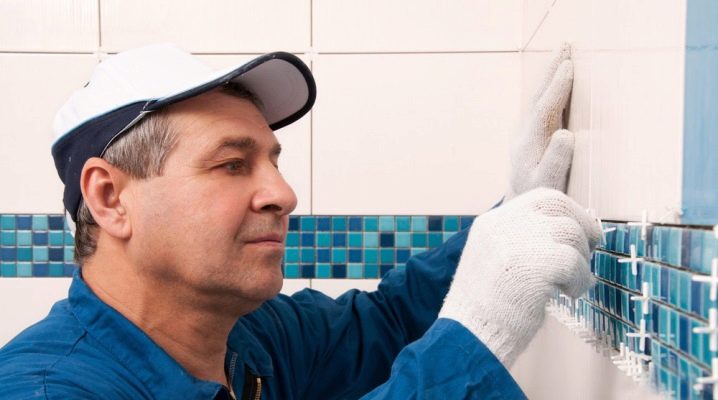
Currently, one of the most relevant materials for decorating a kitchen or bathroom is mosaic tiles. The interior becomes more expressive through the use of small fragments. This design decision is based on the fact that many fragments are able to visually increase the volume of the room, freeing the owner from unnecessary trouble.
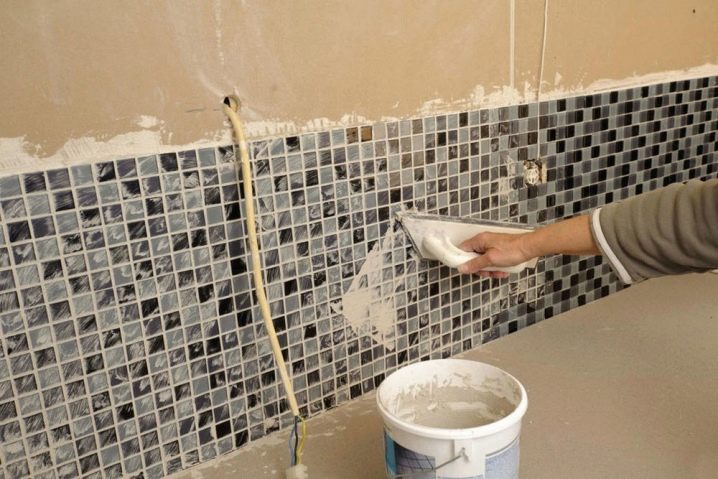
Mosaic
This type of material is a special type of cladding made up of many small elements. Usually the size of one piece varies within a few centimeters.
An important parameter when drawing up a mosaic is to maintain the uniformity of the seams. This must be done to make the drawing seem solid and complete.
The elements themselves achieve fixation in several ways. The most common way is to use paper or netting. The consequence of this is the elasticity of the material and a great ability to various deformations and cuts. There is no need to use a special tool to change the shape and size of such a tile; it is very easy to cut at home.
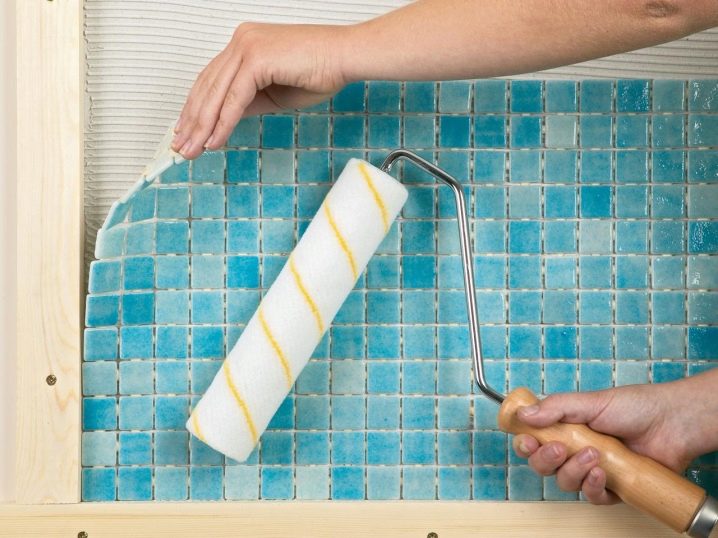
The use of mosaics in modern design has opened up many ways for craftsmen to create unique styles and interiors. Composing unusual panels or whole landscape sketches, they achieved high professionalism in their direction, and also created many options for using the material.
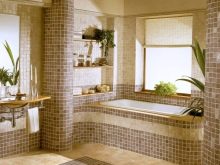
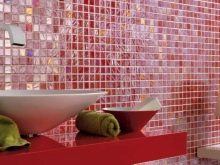
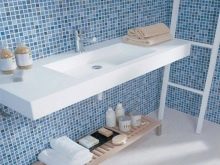
Mosaic materials
Materials for mosaic tiles are very different. They can be based on both natural and synthetic components.
Ceramic Mosaic Tiles
Its manufacture is similar to conventional fired clay tiles, and its coating is distinguished by the presence of a glazed layer. The advantage of this type of tile is the variety of colors and textures.
Another advantage of ceramic mosaic can be seen in its strength and durability - it is often used as a floor covering.


Glass Mosaic Tile
The dimensions of such a tile are represented by squares with sides ranging from 3 to 6 cm. There are advantages to choosing such a tile. There is also a variety of many unique colors, but a clear feature of glass is its resistance to chemical attack, so such tiles have practically no fixed lifespan.
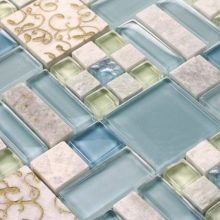

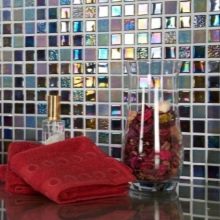
Smalt mosaic tiles
Smalt tiles can have different color textures: from complete transparency to complete matte material. In the color of the tiles, you can see blotches that provide the interior with a special individuality. Smalt is distinguished by its extraordinary depth of color and excellent play of colors when interacting with light rays at different angles of incidence.
The aesthetic feature of the tile is not its only plus, it is also quite durable.
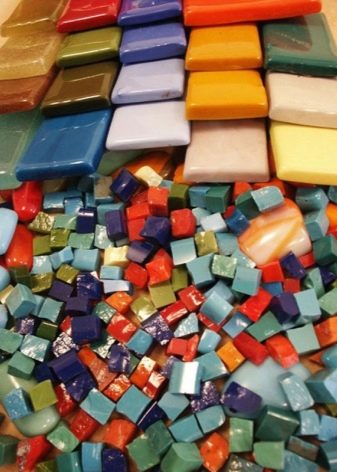
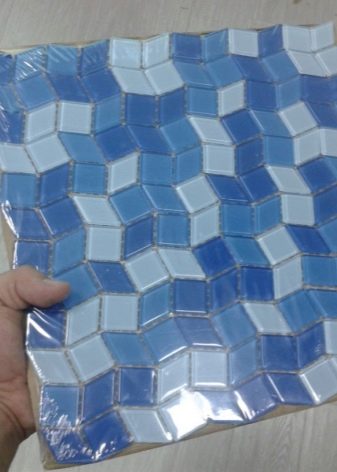
Stone mosaic tiles
The surface of such a tile has a matte or polished structure. This material is strong and durable.
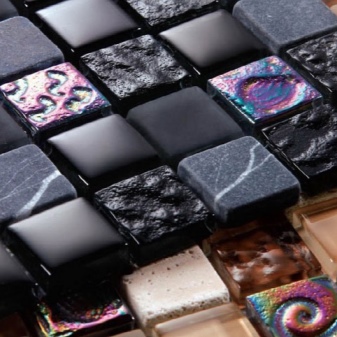
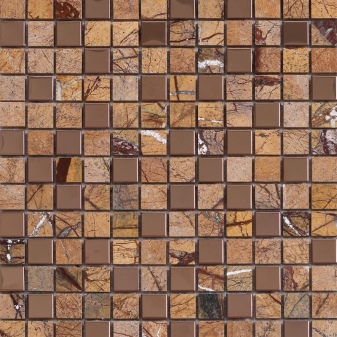
Completing of the work
More recently, only professionals were able to lay mosaic tiles. The cladding process required a great deal of effort, precision and care from the master, since fixing the mosaic required one element at a time. However, progress does not stand still in relation to the laying of the material.The development of technology even makes it possible to get rid of the need to call the wizard to the object, because almost everyone is able to cope with the task of laying a mosaic.
To do this job requires little repair skill and accuracy.
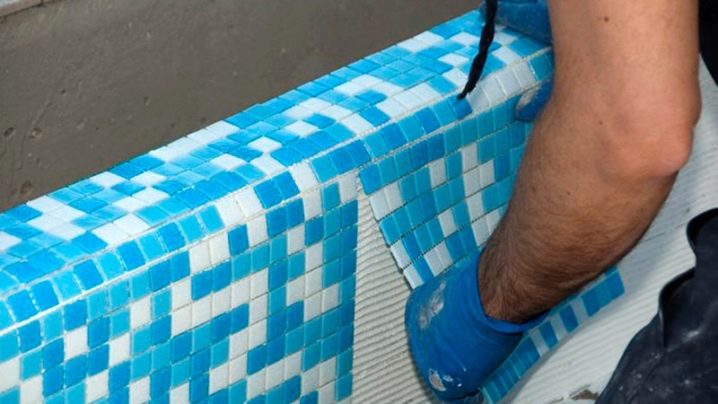
Base
For better adhesion of the material to the wall, it is recommended to first prepare the surface. These types of materials often require a more subtle approach than conventional tiles. The thing is that the main and most important parameter here will be the evenness of the base.
Mosaic is a fairly elastic material, so it is able to reveal any imperfections in the work surface. Experts recommend carefully plastering and rubbing the place chosen for the mosaic.
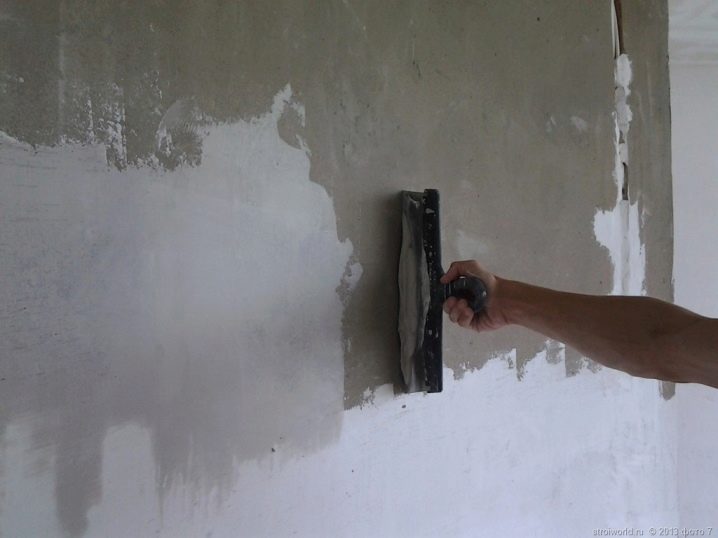
The next important step in preparing for the main job is to keep it clean. Dust, dirt, all sorts of rubbish, the consequences of grinding - all this can become a problem at the next stage of work. The third and essential step is priming. In the case of mosaics, it is advised to use a deep penetration primer to increase the adhesion of the substrate.
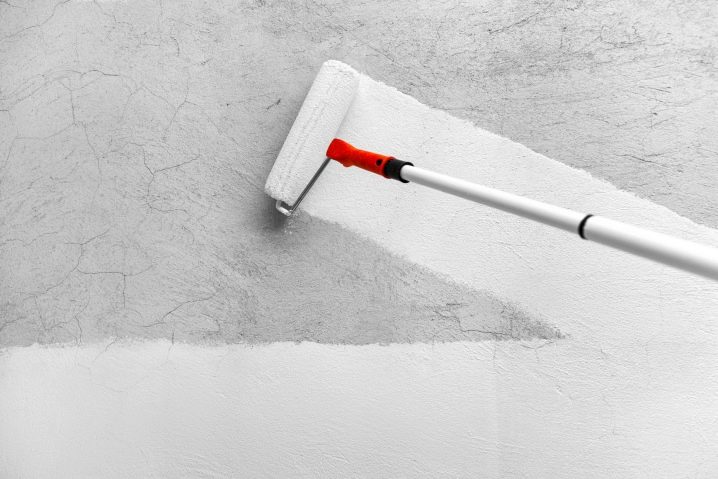
Glue
One of the most important decisions when gluing a mosaic is the choice of solution.
There are three types of formulations:
- dispersive;
- cement;
- reactive.

Dispersion type of glue is considered one of the most budgetary and easy to use. This solution is based on only one component. When working with this composition, there is no need to stir it, dilute it with water or any solvents.
This glue can be used literally immediately after purchase.

One of the main positive aspects of working with this type of glue is its ability to be stored without losing its properties.
After depressurizing the packaging and using part of the composition, you can tightly close the can, and the substance will retain all its qualities until the next use. In addition, this type of solution does not leave behind any dust or dirt. However, its use is recommended only for a small amount of work.

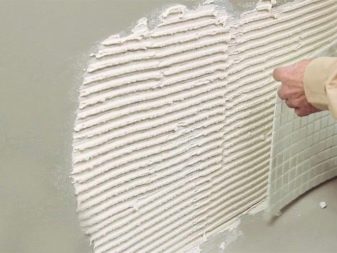
Cement adhesive is suitable for large areas such as multiple walls or other large substrates. This type of glue is made with two types of cement: gray and white.
Its undeniable advantages are manifested in the following parameters:
- elasticity;
- rigidity;
- deformability.
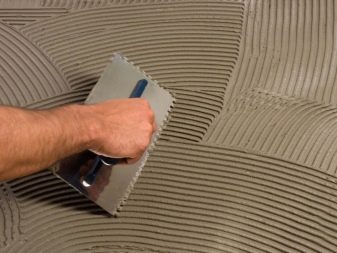
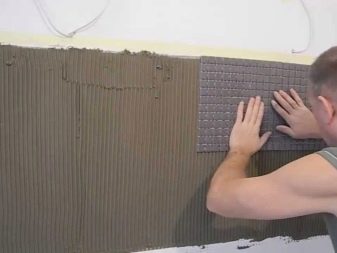
If the mosaic will be glued to a clean, flat surface (a brick base is also suitable for its use), experts recommend using hard-type compounds.
And for a more complex version of work, when the base can be subjected to heat treatment or various kinds of vibrations, its elastic type is more suitable.
Elastic variations of cement glue are also used in apartment renovations. It is usually used to cover the kitchen or bathroom with mosaics. This type of adhesive is also suitable for working on aerated concrete blocks or concrete screed.

Cement glue is usually cheaper than dispersion glue. However, its operation involves stirring with water or other solvents using a special tool. Often, a construction mixer does not allow you to do without subsequent contamination in the form of splashes and stains, so it is difficult to use this glue at home.
One of the most expensive types of mortar is reactive glue.
It includes two components:
- hardener;
- base (epoxy or polyurethane).
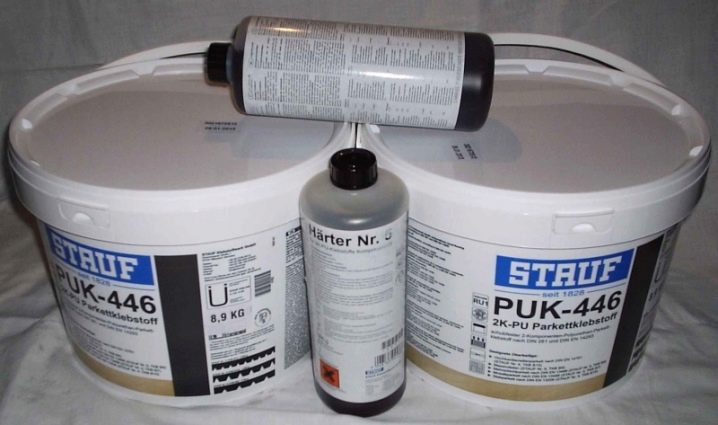
This solution is suitable for use on unusual surfaces: wood, plastic, natural stone, metal or glass.
The peculiarity of the operation of this type of glue is that before starting work, it is necessary to mix its components. After a chemical reaction, the composition almost instantly becomes completely ready for use.
On the advice of professionals, this type of glue should be used fairly quickly. It adheres to the surface almost instantly and hardens. For large tiles made of marble or glass mosaic, waterproof glue is suitable.
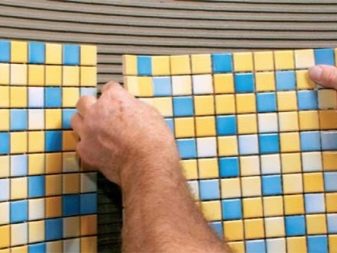
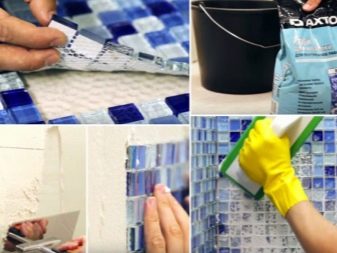
See below for more details.













The comment was sent successfully.